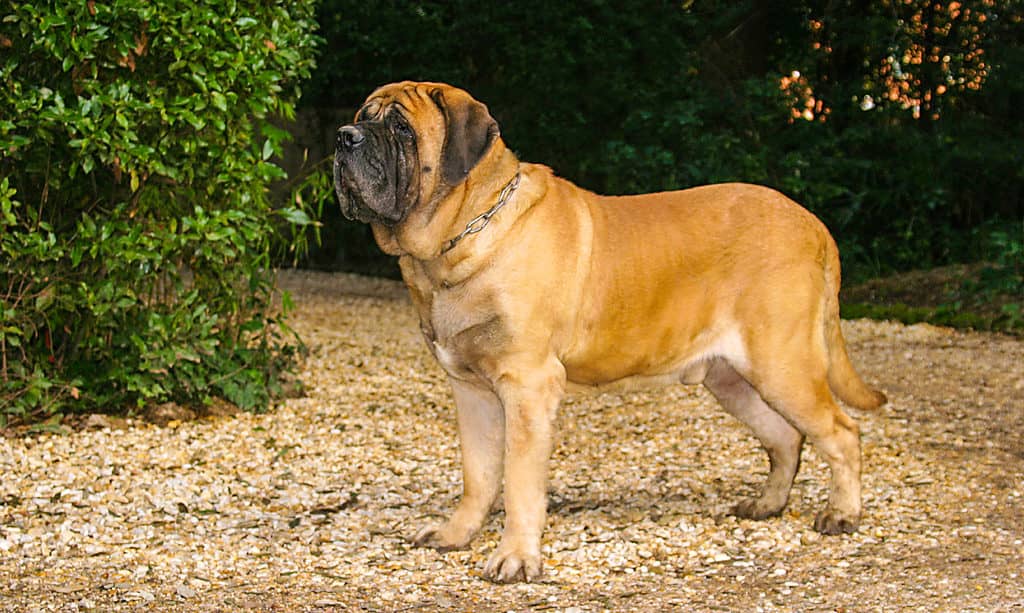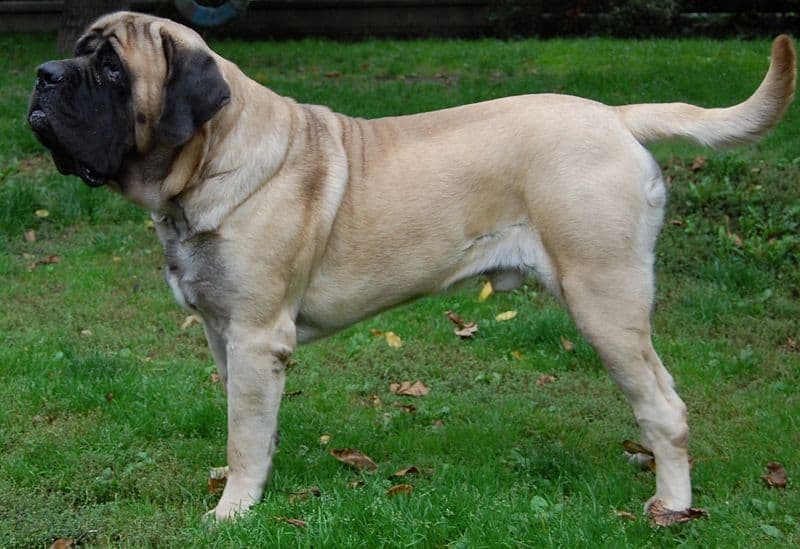Are you thinking of adopting a mastiff? It’s great to do your research before adopting any new pet, and there are a few key differences between male and female mastiffs!
Male mastiffs are larger than females and tend to physically mature more slowly. Females tend to live slightly longer and are less prone to health issues such as joint problems and bloat. There are few temperament differences between male and female mastiffs.
In this article, we’ll discuss six key differences between male and female mastiffs to help you decide which is right for you.
Male vs Female Mastiff Comparison

Male and female mastiffs vary in size, temperament, lifespan, and more.
©Ricantimages/Shutterstock.com
| Male mastiff | Female mastiff | |
| Size | 160-230 pounds, 30+ inches at the shoulder | 120-170 pounds, 27.5+ inches at the shoulder |
| Growth Rate | Mature more slowly than females | Mature faster than males |
| Expenses | Cost less to neuter | Cost more to spay |
| Temperament | Intact males are more prone to wander, mark territory, and slightly more likely to show aggression than females and neutered males | Intact females will go into heat in which they will become restless and more prone to wander or mark territory |
| Health | Prone to reproductive health issues and also more prone to urinary issues, joint issues, and bloat | Prone to reproductive health issues |
| Lifespan | Live slightly shorter on average | Live slightly longer on average |
6 Key Differences Between Male and Female Mastiffs
The six key differences between male and female mastiffs are their size, growth rates, expenses, temperament, health, and lifespan.
Males tend to grow up more slowly and are larger when fully grown. They may experience more health problems than females. Female mastiffs can be more expensive to adopt and spay and tend to live longer than males.
Most supposed differences in male and female temperament are myths but you may see some differences due to hormones, especially in intact dogs.
Male vs Female Mastiff: Size and Growth

Male mastiffs weigh much more than females.
©Susan Schmitz/Shutterstock.com
Female mastiffs tend to weigh less than males and also mature more quickly. Males weigh 160-230 pounds and stand 30 inches or taller at the shoulder. Females weigh 120-170 pounds and stand 27.5+ inches. Neither dog has an upper height according to the American Kennel Club (AKC) breed standard.
Male vs Female Mastiff: Expenses
Reputable breeders will sell male and female puppies at the same cost, and you shouldn’t shop with a breeder who sells female puppies for a greater amount. Good breeders aren’t focused on money but on pairing puppies up with the best homes based on temperament and lifestyle.
That said, you may see female puppies from irresponsible breeders who do cost more than their male counterparts.
Females are also more expensive to spay than males are to neuter. This is because the surgery is more complex and invasive.
Male vs Female Mastiff: Temperament

Male and female mastiffs have very similar temperaments, so you can’t go wrong with either!
©Radovan Rohovsky / Creative Commons – Original
There are many myths surrounding male vs female dog temperaments, but truthfully there is little to no difference, especially if you have your mastiff spayed or neutered.
Intact males are more prone to roam if you allow them off-leash in an unenclosed space. They’re also more likely to mark their territory with urine and have slightly increased rates of aggression. However, most intact male mastiffs are just as friendly as any other!
Intact females will go into heat once to twice yearly and will seek a mate at this time, which can make them restless and increase their desire to roam.
Both are relatively easy to train, though they may get bored with repetitive training sessions. Force-free training methods should always be used and aversive methods and tools avoided.
Male and female mastiffs are both affectionate, protective, and smart. They both require moderate daily exercise.
Male vs Female Mastiff: Health
The biggest health differences you’ll see between male and female mastiffs are reproductive issues such as prostate cancer and cryptorchidism in male dogs and pyometra and ovarian cysts in females. Males are also more likely to develop urinary tract issues.
Male mastiffs also experience an increased risk of size-related health issues such as hip dysplasia, since they can be much larger than females.
Males are at an increased risk of gastric dilatation and volvulus, also known as GDV or bloat. This is an emergent and often deadly condition in dogs, and it’s vital that you learn its symptoms and preventative measures before adopting a mastiff. Their large size and deep chests make both males and females more prone than other dogs to develop this condition.
Remember that females can also develop urinary issues and joint problems. While they’re more common in males, females aren’t immune.
Male vs Female Mastiff: Lifespan
Female dogs tend to live slightly longer than males, likely due to their smaller size. Mastiffs are no exception!
The average lifespan for mastiffs is around eight years.
The photo featured at the top of this post is © Ricantimages/Shutterstock.com
Ready to discover the top 10 cutest dog breeds in the entire world?
How about the fastest dogs, the largest dogs and those that are -- quite frankly -- just the kindest dogs on the planet? Each day, AZ Animals sends out lists just like this to our thousands of email subscribers. And the best part? It's FREE. Join today by entering your email below.
Thank you for reading! Have some feedback for us? Contact the AZ Animals editorial team.







